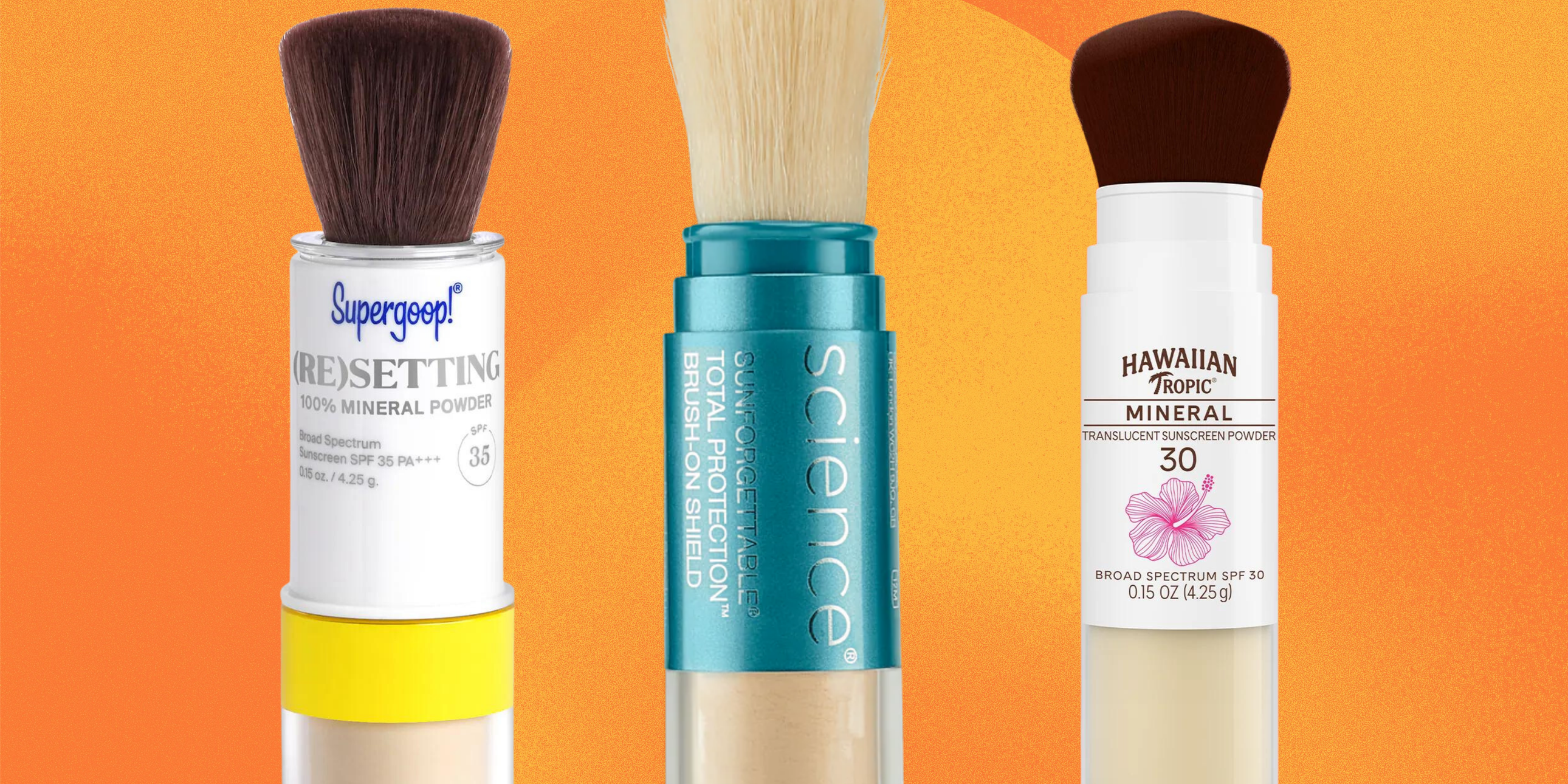In the world of seemingly endless sun protection products, powder sunscreen has gained a ton of well-earned buzz. These protective powders are easy to incorporate into your skin care routine and designed for on-the-go use. So we spoke with dermatologists to learn more about how this unique SPF formula works, and how to find the best option for your skin type.
What is powder sunscreen?
“Powder sunscreen feels more like a setting powder than the more goopy formulations we typically associate with SPF,” Rachel Westbay, MD, a board-certified dermatologist at Marmur Medical in New York City, tells SELF. Powder SPF products typically fall in the mineral sunscreen category, which means they contain zinc oxide and/or titanium dioxide and sit on top of your skin to form a protective shield against the sun’s harmful ultraviolet (UV) rays. Since mineral formulas don’t absorb into the skin, they’re less likely to trigger irritation, which is why many dermatologists recommend them for people with sensitive skin.
What are the benefits of powder sunscreen?
Powders are lightweight and can make the skin look more matte, so they’re especially handy in the sweatier summer months, or if your skin is on the oilier side. “Rather than sinking into your skin, they stay on top of it with a dry texture, so they’re well-suited for acne-prone skin,” Dr. Westbay says. They’re almost always non-comedogenic (meaning they’re formulated to reduce the risk of clogged pores). Plus, they’re ideal for travel (powders are TSA approved!) because they’re portable and largely mess-free.
While there are pluses to powder, it’s important to note that dermatologists still recommend using lotion and cream formulas as your primary source of sun protection. “Powders are helpful for people who are forgetful in their reapplication of sunscreen, but they come off the skin more easily so they’re not a good alternative to liquid sunscreen,” Naana Boakye, MD, MPH, FAAD, a board-certified dermatologist in Englewood Cliffs, New Jersey, tells SELF. Another downside to powder compared to liquid is that it’s hard to know if you’re applying an adequate amount of sunscreen—another reason why powder SPF should be used as a reapplication method, not your base layer.
READ RELATED: I fell in love and had an affair, should I tell my partner?
Dr. Boakye also prefers lotion for people with dark skin. “Since melanin-rich individuals are more prone to hyperpigmentation, I would recommend looking for a tinted sunscreen. They contain iron oxide which helps protect against visible light,” she says.
How to use powder sunscreen
Kara Lara, associate director of global marketing for the skin care brand Colorescience, suggests the tap, flick, and apply method when applying powder sunscreen. “Before each use, tap the brush with the cap side down a few times, then flick the bristles with your finger to see if the powder is flowing,” she tells SELF. “Use small circular motions to sweep the brush onto dry bare skin, moisturized skin, or over makeup. Apply generously to the face for at least 60 seconds.”
Your previous layer of sunscreen should already be absorbed and your makeup, if you’re wearing any, should be set. “I recommend doing at least two passes over the skin for adequate protection,” Dr. Westbay says. And don’t forget about your ears and neck!
The best powder sunscreens
To help find a powder sunscreen that works for your needs and skin type, we curated a list of options that are recommended by dermatologists and highly rated by shoppers.





